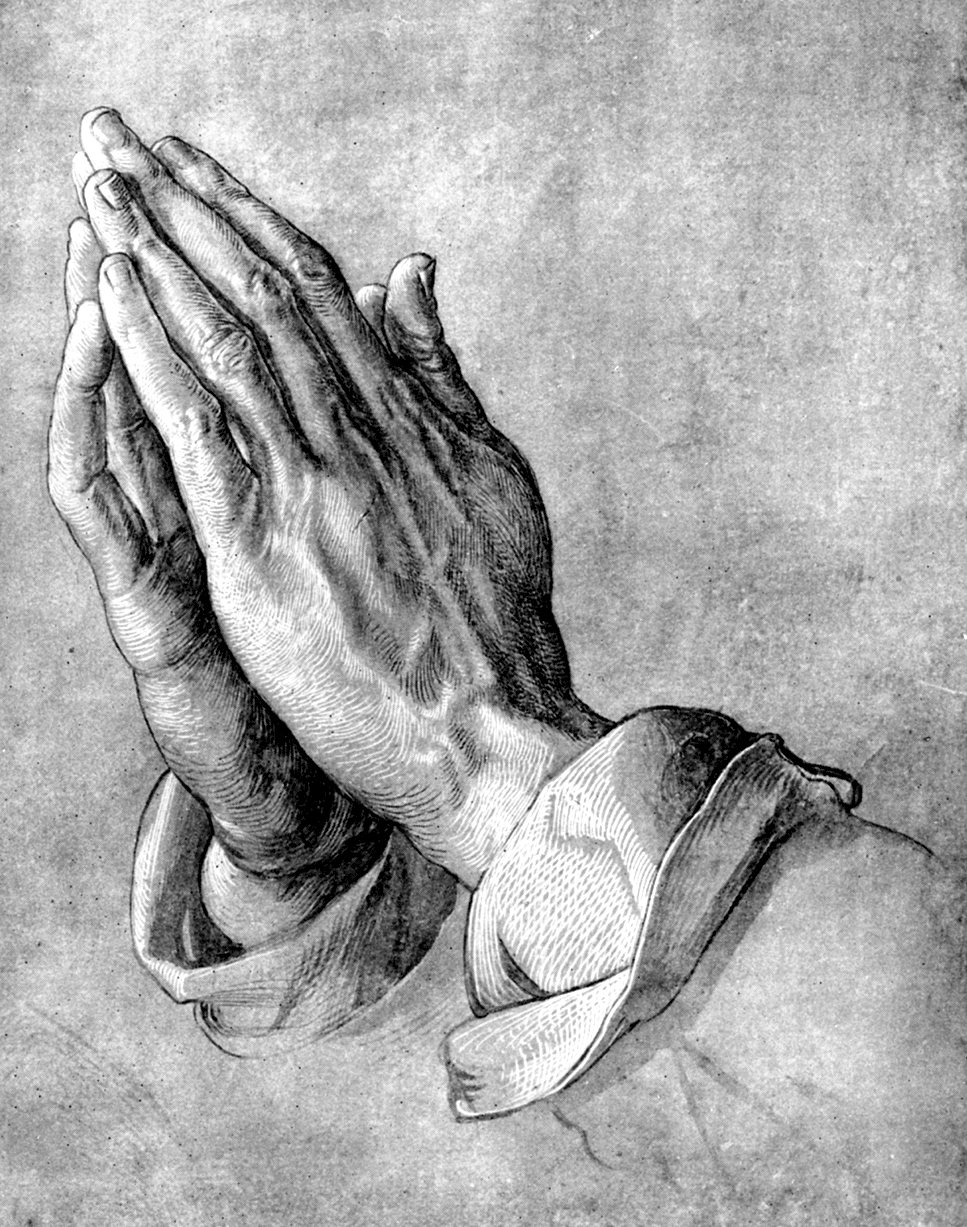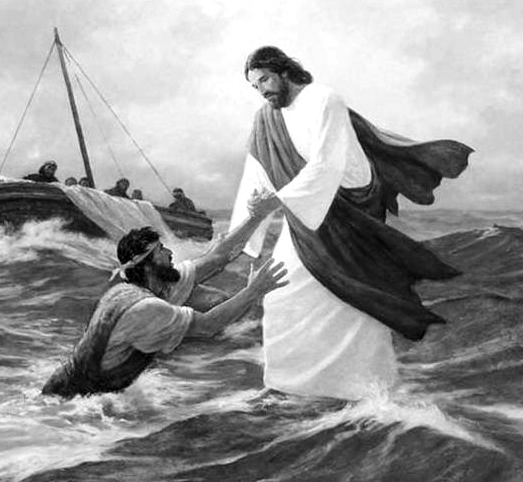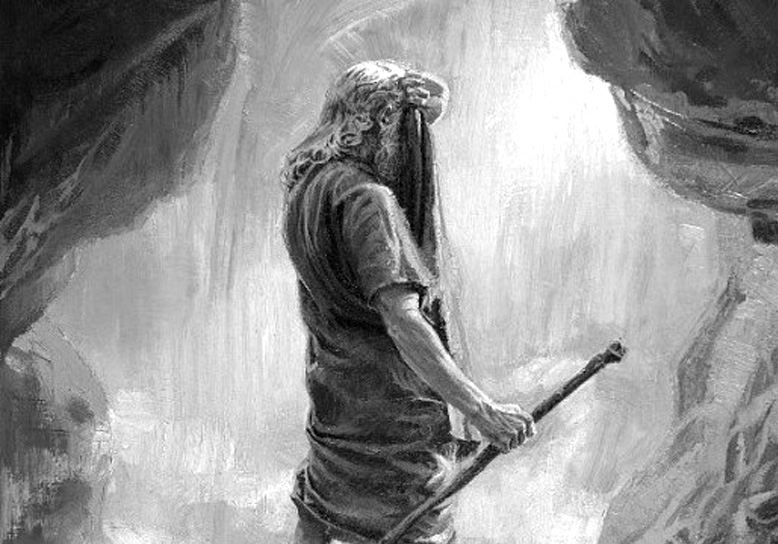Hands of the Living God
The Apostle Paul in writing to the Hebrews resorted to figurative language when he referred to “the hands of the living God.” “It is a fearful thing to fall into the hands of the living God” (Hebrews 10:31). As we ponder this expression, we wonder what prompted Paul to make this statement. The experience he had in the city of Athens, recorded in Acts 17, may have been instrumental in coining this phrase, “the hands of the living God.” In this experience the spirit of Paul was stirred when he saw that the entire city of Athens was devoted to idols. This caused him to rise to the occasion and deliver the remarkable sermon on Mars Hill, the subject being the Unknown God. In his sermon Paul made a contrast between the dead, lifeless gods of the Greeks, with the living God that Paul worshipped, whose hands moved and accomplished mighty things.

“Praying Hands,” Albrecht Durer, 1508
WONDERS OF THE HUMAN HAND
The scriptures make good use of human anatomy in providing some spiritual lessons. The Bible makes many references to the hand because it is so useful in life. It’s design, construction, and function have no equal in the engineering world. The human hand is perhaps the most versatile of all instruments that we know of. Each hand has 25 joints, permitting it to make 58 different motions. Each human hand contains 27 bones. Our two hands contain approximately 26% of all the bones in the body. Our fingertips contain the most densely packed group of nerves. In the construction of the hand the thumb is important. Having opposable thumbs gives us the ability to perform delicate operations, which would otherwise be impossible. The thumb performs 45% of the action of the hand. The human hand is powerful. A strong man can develop a grip of 120 pounds. The human hand can drive a nail with great force, yet that same hand can pick up a tiny needle. The great master designer built this wonderful body of ours. And all these components in the human body respond to a nerve center of our brains.
In the design of the human body, it was necessary for it to relate to the environment. Even the future had to be considered. For example, God foreknew that man would express his thoughts by speech and by writing. Therefore, the design of the hand would have to be in some ways the extension of the mind. What was going on in the mind would be extended by one’s hand. Human thoughts could now be placed on paper. The instantaneous connection between our mind and our hands is truly amazing.
AN INSTRUMENT OF ACTION
The hand is an instrument of action. The hand can bless, it can give, and can be used to heal. The hand also conveys friendship, affection, and sympathy merely by touch. Hands can also produce audible sounds such as clapping to gain attention, or by knocking to gain entrance. “Behold, I stand at the door and knock” (Revelation 3:20).
All the arts of beauty and skill lie right in the palm of our hand. As we compare man’s beautiful hands to that of the paws, claws, and hooves of the lower creation, we can certainly recognize the superiority of the human hand. Not only in its construction, but also in its abilities. The hand also has the ability to speak a language. Those that have lost their speech can train their hands and fingers to convey a language. Sign language is a silent communication with one’s hands. Those who have lost their sight can train their hands to read for them by use of the braille system, only made possible by the feathered touch designed into the fingers which enables them to read.
Of course, the hand by itself would be useless if it were not connected to the brain. It is because of this miraculous connection that an artist can paint, a musician can play an instrument, a physician can heal, and a builder can build. Without this superb instrument responding to the brain, man would lose much. God designed us each with our own personalized set of fingerprints. This illustrates just how much he respects the identity of every individual.
In many ways, human hands become apt symbols of human action. For example, when we speak of pure hands, we mean pure motives. When we say that hands are unjust, we suggest the deeds of injustice. The washing of hands indicates innocence (Matthew 27:24).

Helping hands in every difficulty
Extending the right hand up is a method used in voting. When one takes an oath, the right hand is extended. The mark of friendship and fellowship is extended when we shake right hands. The creator has endowed his creation with two superb instruments.
THE HANDS OF GOD
When the scriptures speak of God’s hands, they are full of meaning. Only by understanding the capabilities of our human hands can we appreciate the statements made in the scriptures.
The prophet Isaiah asks, “Who hath measured the waters in the hollow of his hand and meted out heaven with a span?” (Isaiah 40:12). This picture of God holding the oceans in the hollow of his hand illustrates how very small we are. Isaiah also spoke of God’s measuring device. He measures the heavens with his span. This again is reminiscent of how small this planet is. We are but a speck in this immense universe which God easily measures with his span. Isaiah also likens all the nations of the earth to a drop of the bucket and dust on the balance of the scale (Isaiah 40:15). The imagery conveyed in these words tell us something of the grandeur of God.
The mighty hands of God are working hands. He is the maker and creator of all. In the Psalms 8, David speaks of God’s creative hands. He makes specific mention of God’s fingers, indicating creative works of a delicate nature. “When I consider the heavens, the work of thy fingers, the moon and the stars, which thou hast ordained, what is man that thou art mindful of him? Thou madest him to have dominion over the works of thy hands.” Our great universe is merely a work of God’s creative fingers. Produced by his divine energy, and delicately balanced to sustain life as we know it.
God’s hands are again featured by Isaiah as he likens them to the hands of an ancient potter. “O LORD, thou art our Father, we are the clay, thou art the potter, and we are the work of thy hands” (Isaiah 64:8). Isaiah is here conveying the relationship between the human race and their creator. By using the art of pottery, he is making a very forceful illustration of God’s complete mastery over creation. He is the one who decides what to create. And even though the clay of humanity became contaminated, he will use his hands to clean it up. He will use his hands to shape it into beautiful vessels, especially the beautiful vessels of the New Creation.
The human hand shows purpose. An image of a clenched fist conveys power and determination. People make plans and carry them out. They remove the obstacles to accomplish their purpose. The same is true of God on a much grander scale. Through the power of his hands God’s plan will not fail. He has intervened in human affairs when necessary, so his purposes would be accomplished. We remember how God used the power of his mighty hands to scatter those building the tower of Babel by confusing their language. Those same powerful hands overthrew the Egyptians in the Red sea. Even in Nebuchadnezzar’s dream, the same power was exercised in the smiting of the great image. And that same power will continue to be exercised until God completes his plan and establishes his wonderful kingdom on earth.

Moses in the cleft of the rock
HANDS OF DELIVERANCE
God’s mighty hands are also able to express his personal care for those who serve him. It was David who learned very early to lean on God’s hand. He said, “My times are in thy hand, deliver me from the hand of mine enemy” (Psalm 31:15). From his early youth, David believed God. As a shepherd, he wandered the hills of Israel, seeking water and food for his flocks, and in the night watches he guarded his flocks beneath a star-studded sky. Through these experiences he learned to recognize and appreciate God’s protective care.
In the checkered experiences of David’s life, his thoughts were primarily about his own life. However, in a special way, David also spoke prophetically of the members of the church. When he said, “my times are in thy hand,” he was speaking for every saint down through this age, the “times” spanning the years of ones consecrated life. As the Lord’s people we have placed our interests, our talents, in his hands, to be active in the various opportunities that he presents. Being in His hands, then indicates His careful attention, and our training, development and preparation for a future exalted position. Recognizing the blessing of putting our time in God’s hands brings great peace, and freedom from anxiety.
ENGRAVED IN THE PALMS OF HIS HANDS
The prophet Isaiah penned an unusual expression. “Behold, I have graven thee upon the palms of my hands” (Isaiah 49:16). When something is engraved, such as a piece of jewelry, the effect goes deeper than the surface of the object. It cannot be erased. Being engraved on the palm of God’s hand is significant because the palm is the protected area of the hand and the hand can be closed around the object it wishes to protect or hide. In this verse God is talking about Israel. They are engraved in the palms of his hands. They will never be erased from God’s memory. The preceding verse states that “Israel may forget, but I (God) will never forget.” God promises to never forget them, and they will enjoy his protection. When they were on the verge of extermination, God simply closed his hand around them, and they were saved.
The time will soon come when God will open those protective hands over Israel and reveal the name of Israel etched there. Israel will then be an instrument in God’s hand to bless the world of mankind. This beautiful illustration applies equally to spiritual Israel. The Lord has engraved the names of his children on the palms of his hands. Like natural Israel, the church is protected by the fingers of God and will be the instruments he uses to continue the work he has planned.
IN THE CLEFT OF THE ROCK
Exodus 33:17-22 records an extraordinary experience in the life of Moses. In answering his requests to see the glory of God, the Lord answered, “You cannot see my face, for man shall not see me and live!… Behold, there is a place by me, where you shall stand upon a rock; and while my glory passes I will put you in the cleft of the rock and I will cover you with my hand until I have passed by. Then I will take away my hand, and you shall see my back, but my face shall not be seen.” This must have been an awe-inspiring event for Moses. Just what Moses observed we are not told. But it was a demonstration of God’s greatness. It was God’s hand that shielded Moses from death. But this shield would only be effective if he stood in a designated area. He was to stand on a rock. The hymn writer alludes to this rock, writing “Rock of ages, cleft for me, I am hidden safe in thee, hidden here from all my foes, none can harm, though all oppose.” This is the experience of every child of God. God’s hand will only shield us if we take advantage of the safety that has been provided. We stand on him and him alone. “Thou art my father, my God, and the rock of my salvation” (Psalm 89:26).
UPON THE RIGHT THUMB
At the consecration of Israel’s priesthood, Moses was instructed to place blood from the ram of consecration on the high priest’s right ear, the right thumb and the right big toe. In general, the right side has the most strength and power. It is the side of highest favor. This was to indicate that the Lord wants our best, and strongest powers to serve him. We are to put him in the highest position of honor. Only by responding in full consecration can we reap the benefits of being used by God. The sacrifices it calls for and the commitment it requires is a small price to pay for the tremendous advantages of being engraved in the hand of our heavenly father.
— Gleaned from a discourse by Br. Edmund Jezuit
